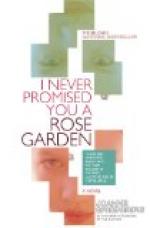For making patches of colour, without paying special heed to the size of flower or development of individual plants, annuals may be sown thinly broadcast, raked in lightly, and, if the beds or borders are not too wide for reaching, thinned out as soon as four or five leaves appear. Portulaca, sweet alyssum, Shirley poppies, and the annual gaillardias belong to this class, as well as single petunias of the inexpensive varieties used to edge shrubberies, and dwarf nasturtiums.
Sweet peas, of course, are to be sown early and deep, where they are to stand half an inch apart, like garden peas, and then thinned out so that there is not less than an inch between (two is better, but it is usually heartbreaking to pull up so many sturdy pealets) and reenforced by brush or wire trellising. Otherwise I plant the really worthy, or what might be called major annuals, in a seed bed much like that used for the hardy plants, at intervals during the month of May, according to the earliness of the season, and the time they are wanted to bloom. Later, I transplant them to their summer resting places, leaving those that are not needed, for it is difficult to calculate too closely without scrimping, in the seed bed, to cut for house decoration, as with the perennials. Of course if annuals are desired for very early flowering, many species may be started in a hotbed and taken from thence to the borders. Biennials that it is desired shall flower the first season are best hurried in this way, yet for the gardenerless garden of a woman this makes o’er muckle work. The occasional help of the “general useful” is not very efficient when it comes to tending hotbeds, giving the exact quantity of water necessary to quench the thirst of seedlings without producing dropsy, and the consequent “damping off” which, when it suddenly appears, seems as intangible and makes one feel as helpless as trying to check a backing horse by helpless force of bit. A frame for Margaret carnations, early asters, and experiments in seedling Dahlias and chrysanthemums will be quite enough.
The woman who lives all the year in the country can so manage that her spring bulbs and hardy borders, together with the roses, last well into July. After this the annuals must be depended upon for ground colour, and to supplement the phloxes, gladioli, Dahlias, and the like. By the raising of these seeds in hotbeds they are apt to reach their high tide of bloom during the most intense heat of August, when they quickly mature and dry away; while, on the other hand, if they are reared in an open-air seed bed, they are not only stronger but they last longer, owing to more deliberate growth. Asters sown out-of-doors in May bloom well into October, when the forced plants barely outlast August.
Of many annuals it is writ in the catalogues, “sow at intervals of two weeks or a month for succession.” This sounds very plausible, for are not vegetables so dealt with, the green string-beans in our garden being always sown every two weeks from early April until September first? Yes, but to vegetables is usually given fresher and deeper soil for the crop succession than falls to flower seeds, and in addition the seeds are of a more rugged quality.




